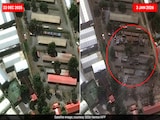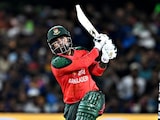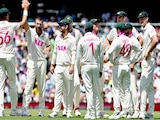Elections are being held for 27 Rajya Sabha seats today across seven states. (File photo)
Voting was held for 27 Rajya Sabha seats today across seven states. A total 57 vacancies have to be filled. 30 people have been elected unopposed as in eight states the number of candidates equalled the number of seats.
Here's your 10 point guide on Rajya Sabha elections
- The Congress is the single largest party in the Rajya Sabha and that status will not change today. But the BJP will narrow the gap. 14 members each from the Congress and the BJP are retiring.
- Members of a state's legislative assembly vote in the Rajya Sabha elections in what is called the proportional representation with the single transferable vote (STV) system. Each voter's vote is counted only once.
- Each voter ranks his preferences and if the first choice candidate has enough votes already or no chance of being elected, the vote is transferred to the second choice and so on.
- For example - there are 11 seats up for grabs today from Uttar Pradesh, which has 404 seats. And there are 12 candidates. Candidates have to poll 34 votes to win a seat, so at the end of the election, one will not have the requisite number and will lose. The other 11 will go to the Rajya Sabha.
- Each voter in UP can rank his or her preferences from one to 12. Each has a choice to list only as many as he or she wants. Parties strategically ask their lawmakers to list candidates, sometimes ordering that they give no more than one choice so that their vote cannot be used by another party's candidate.
- UP's ruling Samajwadi Party has 232 lawmakers and has fielded seven candidates. After its 232 MLAs have voted six of its candidates will be elected safely and the seventh will be short of six votes (7 if it is 231). That gap will be covered by Ajit Singh's RLD which has eight lawmakers and has pledged support to the Samajwadi Party.
- The BSP has 80 lawmakers and has fielded two candidates, who will use up 68 votes. So the BSP has 12 votes to spare. The BJP has 47 lawmakers and has fielded one, so it has 13 votes to spare.
- The ones without enough ready support today are the Congress' Kapil Sibal and Independent Preeti Mahapatra, who the BJP has supported to make Mr Sibal's entry into the Rajya Sabha difficult.
- The Congress has 29 lawmakers in UP, which means that Mr Sibal is short of five. It is counting on Ms Mayawati's 12 spare votes to cover the gap.
- The Congress' back-up plan is Ajit Singh's lawmakers, who are expected to mark Mr Sibal as their second preference. So if the SP's candidate does not need some or all of the RLD's votes, they will get transferred to Mr Sibal. Ms Mahapatra needs 21 non-BJP votes, and will find it difficult to win without cross-voting, which means some lawmakers vote against their party's line and for her.
Advertisement
Advertisement
Advertisement















